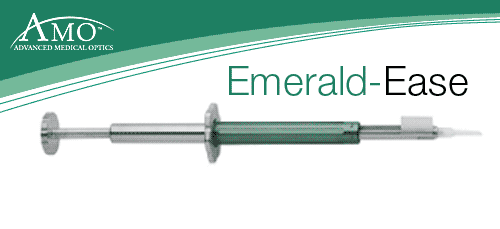BRIEFLY
- ANNUAL SURVEY OF COMPLICATIONS OF
FOLDABLE IOLS RELEASED. Members
of the American Society of Cataract and Refractive Surgery and the
European Society of Cataract and Refractive Surgeons recently received
the sixth annual survey of complications associated with foldable
intraocular lenses (IOLs) requiring explantation or secondary intervention.
The survey evaluated pre-operative data on visual acuity, patient
signs and symptoms and complications requiring IOL removal; complications
were then tabulated for each of the following major foldable IOL groups:
three-piece monofocal silicone, three-piece hydrophobic acrylic, one-piece
hydrophobic acrylic with haptics, three-piece hydrophilic acrylic
(hydrogel), one-piece hydrophilic acrylic (hydrogel), one-piece plate-type
silicone, three-piece multifocal silicone and Collamer. Investigators
received 273 completed surveys for evaluation. Responses showed that
dislocation/decentration, incorrect lens power, IOL calcification
and glare/optical aberrations were the most common reasons for removing
foldable IOLs. Good surgical technique, accurate IOL power measurements
and high manufacturing standards for foldable IOL materials and designs
were the most important factors in avoiding complications with foldable
IOLs.
- B&L LAUNCHES NEW PHACO SOFTWARE.
Bausch & Lomb has launched its Millennium Custom Control Software
(CCS), a new software program for its Millennium microsurgical phacoemulsification
platform. The phaco platform combines the benefits of a lower frequency
phaco tip with hyperpulse power modulation for "hyper-cool"
phaco energy delivery and more desirable surgical outcomes. The new
software will provide a broader range of programmable settings, which
support a variety of surgical techniques from standard phaco to bimanual
cataract surgery. Its hyperpulse technology (0 to 120 pps) has an
adjustable duty cycle ranging from 10 percent to 90 percent, and its
waveform phaco modulation technology provides improved balance and
coordination with irrigation, aspiration and ultrasound pulses, further
reducing ultrasonic energy delivered to the eye. For more information
on the new software, go to www.bausch.com
or call 1-800-338-2020.
-
 CRYSTALENS
NOW AVAILABLE IN QUARTER-DIOPTER STEPS. Eyeonics, Inc.,
has received FDA approval to market its crystalens accommodating IOL
in quarter-diopter steps. The crystalens is the only FDA-approved
accommodating IOL in the United States. The company believes that
the expanded choice of powers will assist surgeons in providing the
best possible visual outcomes for their patients who are seeking a
continuous range of vision with more freedom from spectacles. The
0.25D lenses will be available to credentialed crystalens surgeons
on November 1, 2004. CRYSTALENS
NOW AVAILABLE IN QUARTER-DIOPTER STEPS. Eyeonics, Inc.,
has received FDA approval to market its crystalens accommodating IOL
in quarter-diopter steps. The crystalens is the only FDA-approved
accommodating IOL in the United States. The company believes that
the expanded choice of powers will assist surgeons in providing the
best possible visual outcomes for their patients who are seeking a
continuous range of vision with more freedom from spectacles. The
0.25D lenses will be available to credentialed crystalens surgeons
on November 1, 2004.
- HEIDELBERG
RECEIVES FDA CLEARANCE FOR FIRST CORNEA LASER MICROSCOPE.
Heidelberg Engineering recently announced that it has received FDA
clearance for the Rostock Cornea Module, the key component for its
confocal laser microscope. The new product can image and measure corneal
structures and diseases that were previously difficult, or even impossible,
to see. The Rostock Cornea Module is the first FDA-cleared microscope
using laser scanning technology for directly imaging a patient"s cornea.
It displays magnified images of the internal structures of the cornea,
enabling the clinician to directly view the cell layers and individual
cells in real-time. This may prove especially important for recognizing
parasitic infections which are affecting long term contact lens wearers
in increasing numbers. The cornea module connects directly with the
HRT II, Heidelberg’s laser imaging instrument for glaucoma. For
more information, go to www.heidelbergengineering.de.
|









 CRYSTALENS
NOW AVAILABLE IN QUARTER-DIOPTER STEPS.
CRYSTALENS
NOW AVAILABLE IN QUARTER-DIOPTER STEPS.









